Background
The Western Federation of Miners (WFM) had mixed success in Colorado. After a highly successful strike in the Cripple Creek mining district in 1894, the WFM had suffered a stinging defeat in the Leadville Miners' strike of 1896-1897. The loss at Leadville radicalized the WFM leadership into espousing revolutionary socialism. The union's open use of firearms at Telluride in 1901 helped them win that strike, and eject the nonunion miners from Telluride. But a year after the strike, in 1902, someone killed mine manager Arthur Collins with a shotgun blast through a window in his Telluride home. No one was ever arrested for the crime, but mine owners and mine managers blamed the WFM. Some mine officials saw the murder of Arthur Collins as an example of what could happen to themselves if the WFM were not stopped. The socialist rhetoric of the WFM leadership cost the union allies among businessmen and the middle class. And knowing that the WFM strove toward a world without mine owners, the mine owners were even less inclined than before to deal constructively with the union. [1]
Miners in Colorado particularly resented the lack of an 8-hour work day. The legislature had passed a bill for a mandatory 8-hour workday, only to have the courts declare that it violated the US constitution. A second bill was passed, modeled after a Utah 8-hour bill that survived a US Supreme Court challenge, but the Colorado Supreme Court ruled that the second bill violated the state constitution. A ballot measure to establish the 8-hour day by amending the state constitution passed overwhelmingly in November 1902, but the Republican-controlled legislature meeting in 1903 refused to pass enabling legislation. Blocked politically, the WFM made it a priority to win the 8-hour day for its Colorado members through collective bargaining.
In February 1903, the WFM had won the 8-hour day for employees of the ore processing mills at Colorado City, despite the presence of Colorado National Guard troops protecting the ore mills and the nonstriking workmen. The union victory was due in part to a threatened sympathy strike by gold miners in nearby Cripple Creek, to stop shipments of ore to the offending ore processing mills.
The strike
In April 1903, WFM officials approached managers of the gold mines around Idaho Springs, and proposed that the normal workday be reduced to 8 hours, with no reduction in pay. The owners all refused.
On 1 May 1903, the WFM local at Idaho Springs declared a strike against six gold mines, demanding the 8-hour day with no reduction in wages. About 250 miners walked out, idling six mines. Two mines reopened on 18 May with nonunion miners, but paid the nonunion men the union-demanded wage for an 8-hour day. When these mines, along with a third mine, agreed to take back striking union miners and also pay them the old wage for eight-hour days, the union declared the strike off for those mines. But the other three mines also reopened with nonunion men, and did not go to 8-hour shifts. [2]
Mine owners and businessmen banded together in the Citizens Protective League to counter what its members saw as the violent tendencies of a radical union. Such organizations were forming in many towns in Colorado. The city and county hired 14 extra deputies to protect the mines and miners. In response, the WFM local issued a statement that the deputies were a waste of taxpayer money, because the striking miners were law-abiding. The union noted that many of their members were homeowners and long-time residents of the area: "... we are not dynamiters and thugs." [3] p. 76
Dynamite and deportations
Close to midnight on 28 July, the night watchman at the Sun and Moon mine, one of the remaining strike targets, saw two or three men up on the ridge above the mine, and a brief light, as if one of the men had struck a match. He shouted at the men, one of whom shot at him. Almost immediately, an explosion destroyed the transformer house, below where the men were seen. The dynamiters had left behind one of their number, Philip Fire, a striking union miner mortally injured by a blast, who died before dawn. The Sun and Moon employees surmised that the men on the ridge had prepared two kegs of dynamite to roll down the hill, perhaps one at the compressor house, and one at the shaft house, but, startled by the watchman, they had released the kegs prematurely; one had hit and destroyed the transformer house, and the other keg hit some object and exploded close to the saboteurs, fatally wounding one of them. Had one of the kegs exploded at the shafthouse, it might have killed the four miners in the building, as well as 14 more miners working underground. [3] p. 77
On the same night as the explosion, deputy sheriffs began arresting officers and members of the WFM local.
The next evening, the Citizens' Protective League, which had organized at the beginning of the strike, held an emotional meeting at the Idaho Springs Opera House, chaired by the city attorney. A number of speakers blamed the dynamite attack on the national and local WFM leadership. The deputy district attorney, who was not a member, told the meeting that the legal process would handle the case, and warned against any mob actions. One mine manager, Lafayette Hanchette, accused the WFM of plotting to kill himself and other mine managers, the same as mine manager Arthur Collins had been murdered in Telluride the year before. Referring to a recent incident in which union miners in the Cripple Creek district had ordered a group of arriving miners to turn around and leave the area, Hanchette said: "I think that if it is good law for the Western Federation of Murderers at Victor to walk five Austrians out of town, it is good law for us citizens to adopt here tonight." A motion to expel the top WFM members from Idaho Springs passed with a shout. [2] p. 152-154
A group of 500 marched to the Idaho Springs jail, demanded that 14 of the union men behind bars be released to them, and took the 14 to the city limits, and ordered them to keep walking, and never to return to Clear Creek County. Five more union members were deported from town over the next few days. Among those expelled were the president, vice president, secretary, and treasurer of the WFM local.
In a statement the next day, the Citizens' Protective League blamed the dynamite attack on the rhetoric of "agitators of socialist principals" among the union organizers, whether or not they planned or participated in the incident. The text declared: "We have more sympathy for the Italians touching the fuse that destroyed the transformer house and resulting in the death of one of them, than we have for the agitators who inspired them to do it." [2] p. 155
In late August, 1903, the Western Federation of Miners called off the strike effective 1 September. The union asked only that union members not be discriminated against. [4]
Consequences
The deportation of union miners was followed by a legal stalemate. On one side was district judge Frank Owers in the county seat of Georgetown, who insisted that the deportations had been highly illegal, and castigated the district attorney for not prosecuting members of the Citizens' Protective League. Owers issued bench warrants for 129 league members for participating in the deportation. On the other side was District Attorney H. G. Thurman, who refused to prosecute members of the Citizens' Protective League, but went after union members he suspected of complicity in the explosion at the Sun and Moon mine. The deportees appealed for help to governor Peabody, who answered that they had not exhausted their legal remedies. Eight of the deported union men returned to Idaho Springs, only to be promptly arrested for conspiring in the dynamite attack. Five WFM members were eventually tried, but were acquitted in Clear Creek County. But they then went through another trial on similar charges in Gilpin County, because while the ridgetop was in Clear Creek County, the transformer house was just over the line in Gilpin County. In July 1904, the last of the accused union members was acquitted in Gilpin County. [2] p. 157-159
The Idaho Springs strike was one of the early events in the Colorado labor war. The WFM also called unsuccessful strikes in Denver, Durango, and Telluride. The fiercest struggle of the Colorado labor war was the WFM strike called in August 1903, in its long-time union stronghold of Cripple Creek. The Cripple Creek strike was defeated by the Colorado National Guard and the imposition of martial law. The result was that the Western Federation of Miners was essentially finished as a power in Colorado. [1]

The Western Federation of Miners (WFM) was a labor union that gained a reputation for militancy in the mines of the western United States and British Columbia. Its efforts to organize both hard rock miners and smelter workers brought it into sharp conflicts – and often pitched battles – with both employers and governmental authorities. One of the most dramatic of these struggles occurred in the Cripple Creek district in 1903–04, and has been called the Colorado Labor Wars. The WFM also played a key role in the founding of the Industrial Workers of the World in 1905, but left that organization several years later.

William Dudley "Big Bill" Haywood was a founding member and leader of the Industrial Workers of the World (IWW) and a member of the executive committee of the Socialist Party of America. During the first two decades of the 20th century, Haywood was involved in several important labor battles, including the Colorado Labor Wars, the Lawrence Textile Strike, and other textile strikes in Massachusetts and New Jersey.
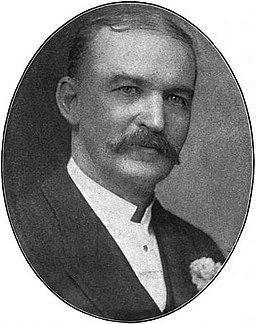
James Hamilton Peabody was the 13th and 15th Governor of Colorado, and is noted by some for his public service in Cañon City and by others for his brutality in crushing the miners' strike in Cripple Creek in 1903–04.
There were two related incidents between miners and mine owners in the Coeur d'Alene Mining District of North Idaho: the Coeur d'Alene, Idaho labor strike of 1892, and the Coeur d'Alene, Idaho labor confrontation of 1899. This article is a brief overview of both events.
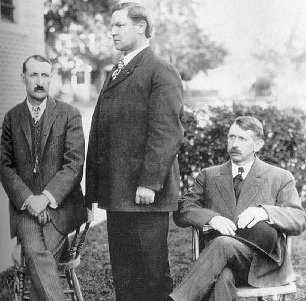
Charles H. "Charlie" Moyer was an American labor leader and president of the Western Federation of Miners (WFM) from 1902 to 1926. He led the union through the Colorado Labor Wars, was accused of murdering an ex-governor of the state of Idaho, and was shot in the back during a bitter copper mine strike. He also was a leading force in founding the Industrial Workers of the World, although he later denounced the organization.
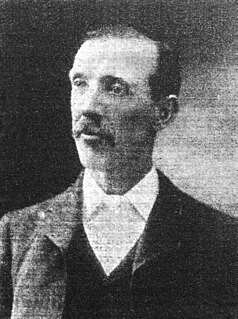
Edward "Ed" Boyce was president of the Western Federation of Miners, a radical American labor organizer, socialist and hard rock mine owner.

The Cripple Creek miners' strike of 1894 was a five-month strike by the Western Federation of Miners (WFM) in Cripple Creek, Colorado, USA. It resulted in a victory for the union and was followed in 1903 by the Colorado Labor Wars. It is notable for being the only time in United States history when a state militia was called out in support of striking workers.
John Calderwood was a Scottish born American miner, and influential labor union leader, who lead miners organized by the Western Federation of Miners to victory in the Cripple Creek miners' strike of 1894. Little is known about his parentage or life.

The American Labor Union (ALU) was a radical labor organization launched as the Western Labor Union (WLU) in 1898. The organization was established by the Western Federation of Miners (WFM) in an effort to build a federation of trade unions in the aftermath of the failed Leadville Miners' Strike of 1896. The group changed its name from WLU to the more familiar ALU moniker in 1902 at its fifth annual convention. The group had a peak membership of about 43,000 — of which 27,000 were members of the WFM. The ALU was a precursor to the Industrial Workers of the World (IWW), established in 1905, which effectively terminated it.
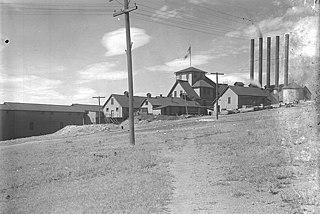
Stratton's Independence Mine and Mill is a historic gold mining site near Victor, Colorado on the south slope of Battle Mountain. Between late 1893 and April 1899, approximately 200,000 ounces (6200 kg) of gold was removed from the Independence Mine.
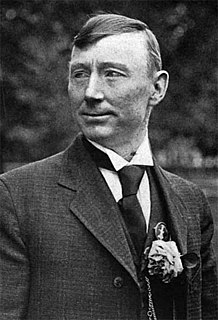
Steve Adams, sometimes known as Stephen Adams, was a miner and member of the Western Federation of Miners (WFM) in the early 1900s. Adams was named as an accomplice in several murders by Harry Orchard, who said that the murders were done at the orders of the WFM leadership. Adams was tried three times for murder, but was never convicted.

The Colorado labor wars were a series of labor strikes in 1903 and 1904 in the US state of Colorado, by gold and silver miners and mill workers represented by the Western Federation of Miners (WFM). Opposing the WFM were associations of mine owners and businessmen at each location, supported by the Colorado state government. The strikes were notable and controversial for the accompanying violence, and the imposition of martial law by the Colorado National Guard in order to put down the strikes.
In the United States, a Mine Owners' Association (MOA), also sometimes referred to as a Mine Operators' Association or a Mine Owners' Protective Association, is the combination of individual mining companies, or groups of mining companies, into an association, established for the purpose of promoting the collective interests of the group. Such associations are sometimes referred to as MOAs, however, in some cases they may be designated by the state, district, or locale, such as the Cripple Creek District Mine Owners' Association (CCDMOA).
Citizens' Alliances were state and local anti-trade union organizations prominent in the United States of America during the first decade of the 20th century. The Citizen's Alliances were closely related to employers' associations but allowed participation of a broad range of sympathetic citizens in addition to those employers apt to be affected by strikes. Originating in the American state of Ohio as the "Modern Order of Bees," the Citizens' Alliance movement spread westwards, playing a particularly important role in labor relations in the states of Colorado and California. Citizens' Alliance groups often worked in tandem with smaller but better financed employers' organizations interested in establishing or maintaining open shop labor conditions, including the Mine Owners' Associations (MOA) or the National Association of Manufacturers (NAM).
The Leadville miners' strike was a labor action by the Cloud City Miners' Union, which was the Leadville, Colorado local of the Western Federation of Miners (WFM), against those silver mines paying less than $3.00 per day. The strike lasted from 19 June 1896 to 9 March 1897, and resulted in a major defeat for the union, largely due to the unified opposition of the mine owners. The failure of the strike caused the WFM to leave the American Federation of Labor (AFL), and is regarded as a cause for the WFM turn toward revolutionary socialism.
Hard rock miners' organizations have included fraternal and union organization of miners or mine workers formed for the purpose of addressing issues such as wages, health and safety, funeral arrangements of members, or widow's benefits. Fraternal organizations have tended to focus on welfare and community; union organizations and federations have included economic issues and negotiations with employers.
The November 1897 proclamation of the State Trades and Labor Council of Montana was a reflection of western labor's assessment of the struggle between labor and capital after the failed Leadville Colorado, Miners' Strike. The proclamation, and the impetus behind it had a significant impact on the labor movement in the United States, Canada, and other countries for a period of several decades.
The Coeur d'Alene, Idaho, labor riot of 1899 was the second of two major labor-management confrontations in the Coeur d'Alene mining district of northern Idaho in the 1890s. Like the first incident seven years earlier, the 1899 confrontation was an attempt by union miners, led by the Western Federation of Miners to unionize non-union mines, and have them pay the higher union wage scale. As with the 1892 strike, the 1899 incident culminated in a dynamite attack that destroyed a non-union mining facility, the burning of multiple homes and outbuildings and two murders, followed by military occupation of the district.

The Coeur d'Alene, Idaho, labor strike of 1892 erupted in violence when labor union miners discovered they had been infiltrated by a Pinkerton agent who had routinely provided union information to the mine owners. The response to that violence, disastrous for the local miners' union, became the primary motivation for the formation of the Western Federation of Miners (WFM) the following year.
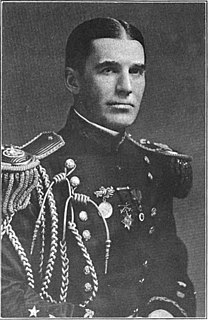
Adjutant General Sherman M. Bell was a controversial leader of the Colorado National Guard during the Colorado Labor Wars of 1903-04. While Bell received high praise from Theodore Roosevelt and some others, he was vilified as a tyrant by the leadership and the miners of the Western Federation of Miners (WFM).











